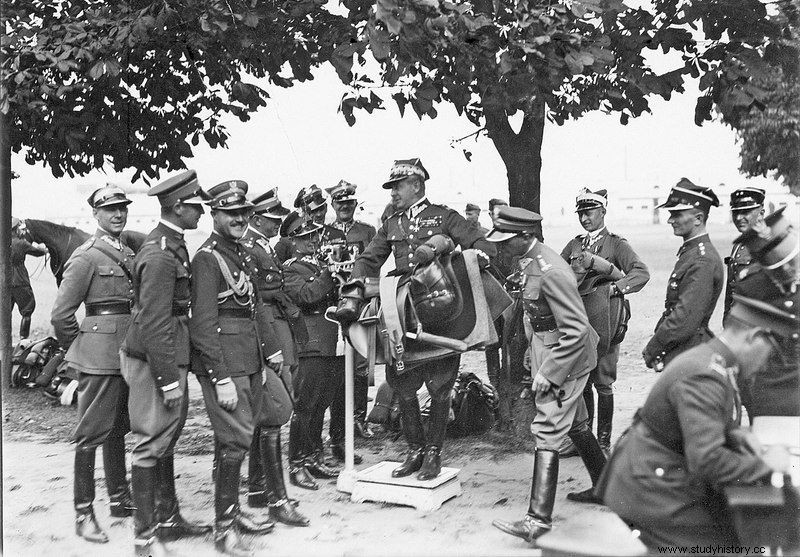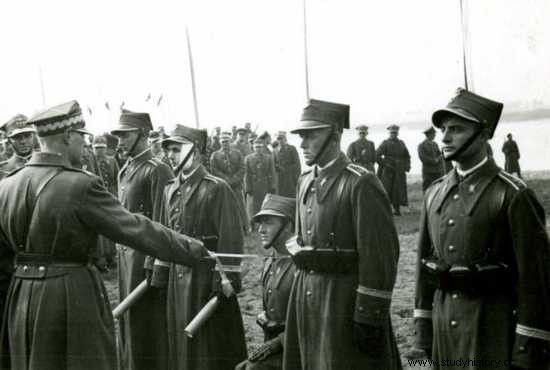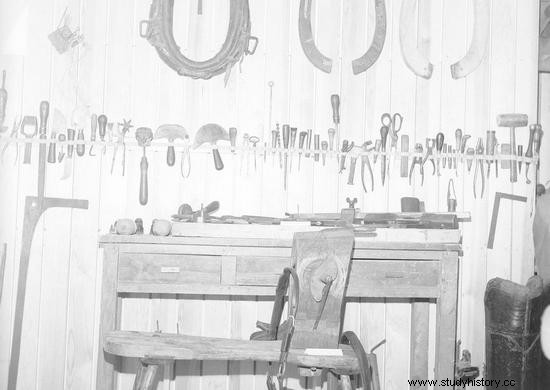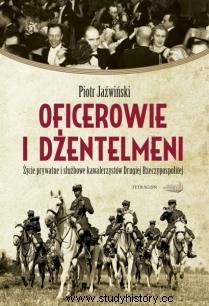A saying that was fashionable in a bygone era was that it is not a high school diploma but a sincere willingness that will make you an officer. Meanwhile, in the Second Republic of Poland, obtaining an officer's patent required not only a maturity certificate, but also a considerable financial effort ...
No, it does not mean that officer ranks were bought. On the contrary! Anyone who wanted to join the officer corps had to prove that he was worthy of this honor by graduating from the officer school. However, another obstacle awaited the young second lieutenant starting his professional service. It was the purchase of full personal equipment. The fact that this was a serious burden - especially if you used mobile weapons - can be seen by reading Piotr Jaźwiński's book "Oficerowie i gentelmeni. Private and business life of cavalrymen of the Second Republic of Poland.
Polish soldier? Such Zosia samosia…
Although it is difficult for us to imagine it today, in interwar Poland the officer did not receive personal equipment from the warehouse. He had to buy them himself . Only once a year, he was entitled to a special allowance of PLN 300, which was to cover all related expenses. If the cost of purchases exceeded this amount, he had no choice but to reach into his own pocket.

Such a saddle cost a real fortune. In the photo, General Wieniawa-Długoszowski (in the center) with participants of the 2nd Cavalry Division on the Warsaw-Bielsko route.
A freshly baked apprentice of the officers' school, in a way "in an act of grace", he received it in two years in advance, but it was only a drop in the ocean of expenses that awaited him. As noted in his memoirs - quoted by Piotr Jaźwiński - Grzegorz Cydzik, the long list of things to buy included:
- armament - officer saber with a silver sling, 7.65 mm pistol with a leather case, sixfold field binoculars with a leather case, a leather field bag and a map holder;
- field uniform - jacket, breeches (tight-fitting pants from the knees, puffed, worn with uppers), boots, forage cap, main belt, field cloth belt, rain cape;
- garrison uniform - (so-called exit) jacket, breeches, chasers with stripes (long trousers for gala attire), double-breasted officer coat, gabardine summer coat, horn cap, shoes Chelsea boots (lacquered boots with rubbers sewn in on the sides to better fit the leg; silver-plated ferrules imitating spurs were nailed to the heels of Chelsea boots), gala silk belt with rapci;
- additional equipment:four sets of linen, two blankets, four sheets, a pillow, two pillowcases, two large, solid suitcases, a linen bag.
Theoretically, some of the listed items the second lieutenant had from the time when he was still a cadet, after all, they could be used only if they are in perfect condition. As you can guess, this did not happen often.
In connection with the above, the total amount that had to be spent on equipment in the first half of the 1930s oscillated around 2.5 thousand zlotys (i.e. about 25 thousand today's zlotys!) . For example, the boots themselves cost PLN 110-120, Chelsea boots PLN 40, a saber around PLN 70, a pistol around PLN 80, and binoculars as much as PLN 280 (equal to the monthly salary of a second lieutenant).

Officer promotion in the Cavalry Training Center in Grudziądz, born in 1935-1937. Promoted by General Władysław Anders. There are really big expenses for the newly minted second lieutenants.
It is not surprising that in most cases the possibility of… taking a loan was used in the amount of PLN 600, which had to be repaid within two years. The family also tried to support the young officer with their strength and resources.
Do you think this is the end of torment? No way! Service in the cavalry was also associated with the necessity to acquire, at his own expense, rows of horses:field and so-called sports. The first one consisted of a saddle with a saddle pad and panniers, and a bit-curb bridle.
It cost 1200 zlotys at the saddler Lassota in Warsaw (around 800 in the provinces). For the second one, you had to pay from 400 to 500 zlotys, for which you received a semi-Italian saddle and bridle. It turns out that for the cost of becoming a cavalry officer, today you could buy a good used car for several years.

Saddlery workshop. It was in such a place that, among others, cavalry saddles and harnesses.
And you still have to live somewhere and eat something
Well, maybe at least the accommodation and meals were free? In the first case, a bachelor officer could count on a service room in the barracks, but again he had to furnish it on his own. If it was not too demanding, it was in the amount of PLN 500.

But the army did not feed the officer. If he did not have a wife to cook for him, he could only eat at the officers' casino, for which he paid about 90 zlotys a month. In addition, all officers were required to pay "voluntary" contributions for representation and social purposes. The officer also had to pay pocket money to his orderly, and when he had the honor of serving in the cavalry also to a groom whose duties included caring for his mount.
For a complete picture of what the life of a young lieutenant of the Polish Army was like, it should be mentioned that he earned 281 zlotys a month with all the extras. Theoretically, it was a high salary (most state employees received a salary below PLN 200). However, if you look at how his monthly expenses were shaped, it turns out that he was simply slapping poverty.
As calculated by Piotr Jaźwiński, after deducting taxes (PLN 30), paying for food (PLN 90), repaying loan installments (PLN 120), paying "voluntary" contributions for various purposes (PLN 25) and paying for the services of a laundress or a shoemaker, he was left with only a dozen or so zlotys for cigarettes, a cafe or a theater. And yet, as we remember, there was also an orderly and a gentleman who were waiting for their pocket money ...
